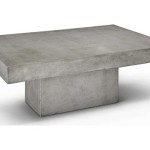Outdoor Wood Railing For Steps
Wood railings are a beautiful and classic complement to any set of outdoor steps, offering both safety and style. However, not all wood railings are created equal; some woods are better suited to outdoor use than others, and some styles are more durable than others.
If you're considering installing a wood railing on your outdoor steps, it's important to do your research and choose the right materials and style for your needs. Here are a few things to consider:
1. Wood Type:
The type of wood you choose for your railing will have a significant impact on its durability and appearance. Some of the most popular wood types for outdoor railings include:
- Cedar: Cedar is a naturally rot-resistant and insect-repellent wood, making it an excellent choice for outdoor use. It is also relatively lightweight and easy to work with, making it a good option for DIY projects.
- Redwood: Redwood is another rot-resistant and insect-repellent wood, and it is also very strong and durable. Redwood is a bit more expensive than cedar, but it is a good choice for railings that will be exposed to harsh weather conditions.
- Pressure-treated pine: Pressure-treated pine is a budget-friendly option that is treated with chemicals to resist rot and insects. Pressure-treated pine is not as durable as cedar or redwood, but it is a good choice for railings that will be painted or stained.
2. Style:
The style of your railing will depend on your personal preferences and the overall design of your home. Some of the most popular styles for outdoor wood railings include:
- Traditional: Traditional railings feature simple, straight lines and balusters (vertical posts) that are evenly spaced. Traditional railings are a good choice for homes with a classic or colonial style.
- Modern: Modern railings feature clean lines and geometric shapes. Modern railings are a good choice for homes with a contemporary or minimalist style.
- Rustic: Rustic railings feature natural materials and rough-hewn finishes. Rustic railings are a good choice for homes with a cabin or lodge-style.
3. Height:
The height of your railing will depend on the height of your steps and the local building codes. In general, railings should be at least 36 inches high for steps that are more than 30 inches high. However, it is always best to check with your local building department to determine the specific requirements for your area.
4. Maintenance:
All wood railings require some maintenance to keep them looking their best. This maintenance includes cleaning, staining, or painting the railing on a regular basis. The frequency of maintenance will depend on the type of wood you choose and the climate in which you live.
Installation Tip:
Installing a wood railing on outdoor steps can be a challenging project, but it is possible to do it yourself if you have the right tools and skills. Here are a few tips to help you get started:
- Make sure that the steps are level and structurally sound before you begin installing the railing.
- Use galvanized or stainless steel screws to attach the railing to the steps.
- Caulk the joints between the railing and the steps to prevent water damage.
- Stain or paint the railing to protect it from the elements.

Outdoor Handrail Wood 8 Steps For Deck Stairs

Pin Page

Simple Exterior Handrail For Less Than 100 6 Steps With Pictures Instructables

25 Exterior Stair Railing Ideas Stairs

Outdoor Stairs 5 Steps With Wooden Handrail 7x7cm

How To Add A Railing Stairway Easy Diy Project

Stair Railing

How To Build New Front Stairs And Railings

Creative Deck Rail Design Ideas Hgtv

Wood Deck Railing Railings Outdoor Redwood And Cedar








